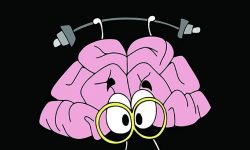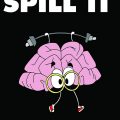
Shopperception and its Implications in Indian Retail

Shopperception is the ongoing trend now
The relevance of technology in the offline retail segment was perceived limited till recently. But there is a huge change in this outlook. The next big wave expecting to change the face of offline retail shopping experience is ‘Shopperception’.
The Concept
Imagine you enter a supermarket and pick a bottle of juice. No sooner you notice a nearby twin pack of another brand. You keep the single pack aside and go for the twin pack which carries a discount. This casual behavioral pattern of a consumer means a lot to the brands. Shopperception analyzes this behavior of visitors in a store through 3D motion-sensored cameras and thereby allows store managers and brands to get unique insights to consumer shopping patterns.
This tool is used not only to analyse the shopping patterns and preferences of walk-in customers, but also to provide highly personalized, on the fly promotional offers to customers who opt for loyalty programmes. The small 3D sensor device used is located above the key area in a shop. It covers about 8-11 feet around and the data is transmitted to the store manager in real time through custom built application to his tablet or Smartphone.
Shopperception and the Indian Retail
For Retailers:
Store managers can efficiently identify the shelves, products / categories and budgets that are more likely to attract customers and thereby plan ways to engage customers effectively through ideal product placements and schemes.
Stores can offer promotional offers for customers who join the loyalty program or embrace a long term membership. Also, if a customer opts for a loyalty programme, Shopperception immediately recognizes them when they check-in. It remembers their previous buying habits and predicts what they are likely to want on this visit.
For Brands:
Brands battle for more shelf space and visibility in retail stores, but few of them realizes how many customers actually stop in front of their shelves. Here, it is noteworthy to understand how the international brand Heineken conducted a successful pilot using Shopperception to identify the best shelf positioning. Understanding this pattern, they developed a real-time marketing initiative around their mobile channel.
Similarly, brands can address their multiple concerns like how a new product engages customers, a recent campaign driving consumers, brand loyalty of customers, role of packaging in purchasing decisions, budget preferences, and factors like seasons, competitions, etc affecting the sales, through Shopperception.
Point of sale ticket analysis may help in getting the final output of shoppers, but fails to track the decisions and factors driving purchase decisions.
Efficient Strategies:
Shopperception helps brands and stores to plan efficient strategies and engage shoppers based on their actions in front of the products. It also helps in location wise / city wise analysis. For example, the behaviour and preference of consumers in Tier 3 and 4 cities will be different from that of Tier 1 and 2. Even in Tier 1 and 2, customers belong to various segments based on their spending patterns.
Based on modules that integrate weather and date, the technology can even predict days of the week when the sales would be the strongest or weakest.
For Customers:
Indian shoppers often compare products before finalizing their choice. Customers can get personalized promotional offers or information about a rival product on the spot, when they pick a particular product on their Smartphone.
Technological advancements like Shopperception have changed the approach of retailers in the developed countries and no sooner India would whole heartedly welcome this considering the market sentiments. As technologies becoming an indispensible part in growth, retailers need to pause and look around to stay abreast.
Have you adopted Shopperception for an experience? Do let us know.









